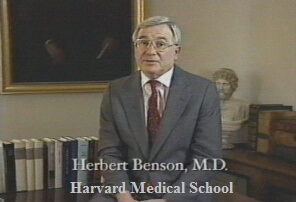
Herbert Benson, M.D. Harvard Medical School
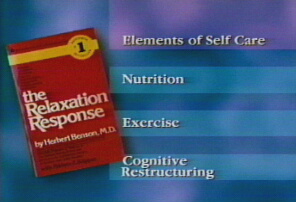
The crimson book that is a national best seller

Oxygen consumption decreases during meditation
indicating a low demand for oxygen during deep rest.
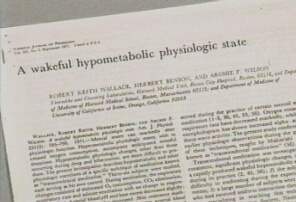
First published study on meditation by Dr. Benson:
in 1971, "A wakeful hypometabolic physiologic state"
Dr. Herbert Benson and Dr. Robert Keith Wallace
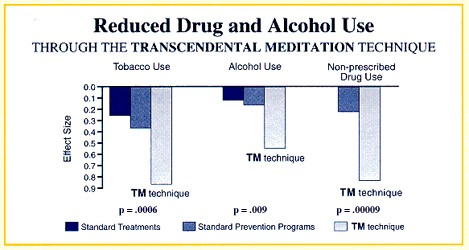
Benson, H.; Wallace, R., et
al. Decreased drug abuse with Transcendental Meditation: A study of 1,862 subjects.
In Drug Abuse: Proceedings of the International Conference,
ed. Chris J. D. Zarafonetis, pp. 369-376.
Philadelphia: Lea and Febiger, 1972.
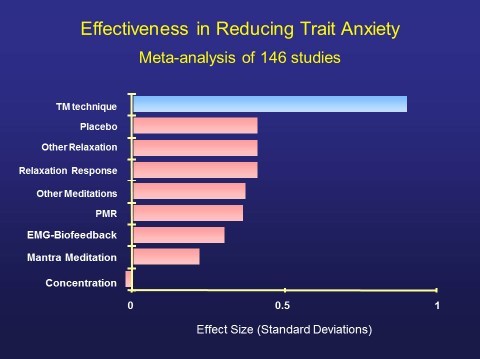
The Relaxation Response was found to be the same as a Placebo
in reducing trait anxiety in a meta-analysis of 146 studies.
Meta-Analysis 2 – Decreased
Trait Anxiety through the Transcendental Meditation technique Compared
to Other Meditation and Relaxation Techniques.

Meta-Analysis 4 – Reduced
Alcohol Abuse through the Transcendental Meditation technique Compared
to Peer Influence Programs, Relaxation Techniques (Biofeedback,
Progressive Muscle Relaxation, Clinically Standardized Meditation,
Relaxation Response), Driving Under the Influence (DUI) Programs, and
Preventive Education.

Meta-Analysis 7 – Improved
Psychological Health through the Transcendental Meditation Technique
Compared to Zen and Other Meditation Techniques Designed to Mimic the TM
technique (Relaxation Response Techniques).
The RR was the 3rd best technique studied.